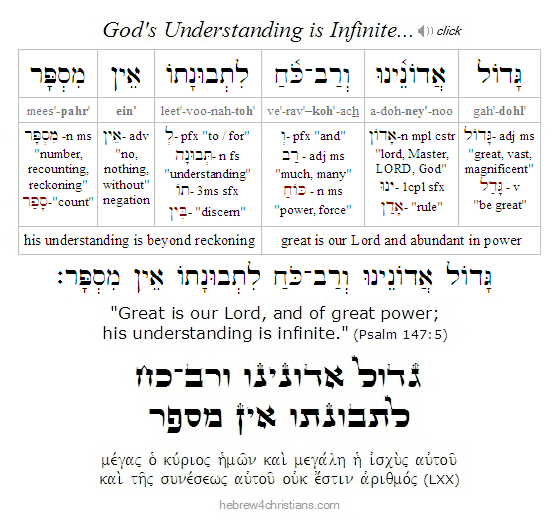|
Our Torah reading for this week includes the tragic account of the "Golden Calf," a molten image of gold that was forged into the shape of a calf, which was created by Aaron to pacify the people who feared they were abandoned by the LORD in the desert (see Exod. 32). The creation of the Golden Calf (i.e., egel ha'zahav: עגל הזהב) was a direct violation of the Second Commandment not to have any other gods before the LORD: not to make an idol or "carved image" (פֶסֶל) of "any likeness" (תְּמוּנָה) of anything in heaven above, or in the earth beneath, or in the water under the earth" (see Exod. 20:3-6). The Torah's language here seems to forbid making any concrete expression of the Divine Presence, a general prohibition against "finitizing" the infinite or identifying God with any aspect of creation. In other words, while God sustains and upholds all things, He is not fully present in any particular thing we experience: He is beyond all the "predications" of finite reality, and therefore we know him through a process of negation, that is, by denying that the LORD can be categorized, identified, rationalized, explained, and so on. This is part of the meaning of the Name YHVH (יהוה) after all: the ineffable, unutterable mystery and wonder of the "in-finite" Divine Presence (Gen. 32:29; Exod. 3:14; Judges 13:18; Isa. 9:6).
The problem arises, however, when we try to reconcile this abstract conception of God as "not [anything] finite" (i.e., ein sof [אֵין סוֹף], the Endless One) with the particulars of our daily experience as human beings. Indeed, how can we adequately express worship for God apart from concrete rituals and language that are bound up with finite references? We seek to represent God's beauty and truth through words, art, music, theater, and so on, yet our expressions are bound to particular things, and we are therefore unsure how our worship connects to ultimate reality... This is a problem inherent in the Torah itself, since the artistry required of the Mishkan (Tabernacle) involved devising and creating various pieces of art, and even creating molten images (e.g., the cherubim upon the kapporet of the Ark), yet this surely did not violate the deeper meaning and end of Torah! The same made be said of the rituals of the priests which foreshadowed a deeper reality -- the deeper atonement of God, the "Substance and not the shadow" (Heb. 8:5). So how do we make art that does not idolize or idealize the finite? How can we do our rituals, speak theology, preach, teach, create visual art or music, that does not distract or mislead the truth of God?
The Hebrew word for "idol" in the Second Commandment is pesel (פֶּסֶל), a noun which comes from a root verb meaning to cut or hew. By implication, a pesel refers to the effect of cutting, that is, a fragmentary or broken piece or outcome.... Some have said that the context of the prohibition of creating graven images constitutes a prohibition of use - a caution about how we are to relate to artwork in general... We are not to worship the creature rather than the creator (Rom. 1:25), mistaking the part for the whole, and this further implies we are not to worship the technology or skill of a particular artist.
In light of this, some visual artists influenced by the Torah, such as Marc Chagall, have approached their art by indirection, "messing with" or distorting representational or habitual ways of seeing, so that we may "stay awake" to the truth and seek a deeper experience within the heart. This is a prophetic function of art - to encounter the unexpected, the mysterious, and the "numinous." Surrealism and other non-representational forms of art move us away from the concrete to the abstract, away from the particular to the universal.
The Bible, of course, is itself a physical work of art – its hand-sewn parchments, its meticulous calligraphy, its "jots and tittles," it scroll adornment and decorations, and so on - all are exquisitely beautiful, just as it is a spiritual work of art, including visions, dreams, prophecies, images, symbols, metaphors, poems, and so on... The language of Scripture, especially poetry, parables, symbols, similes, metaphors, prophetic narratives, and so on, allow us to participate in the Divine Reality through concrete and particular expressions. Like a multi-faceted diamond, words of Scripture emit flashes of insight within the heart of faith.
Moreover creation itself is God's art, as it says: "The heavens are retelling the glory of God, the expanse of the skies declare the work of his hands" (Psalm 19:1). If art is a means of representation intended to reveal something deeper, then we can look at God's art - the sky and the cosmos - with such awe that it will lead us to an even greater sense of awe over the design, the cause, and the presence of it all. The beauty of nature, and indeed the cosmos itself, points beyond itself to the beauty of transcendental design and wonder.
One implication of the Second Commandment, then, seems to be that art should not be static or turned into "graven images." Art, even including the rhetoric of theology, may give us false assurance that can lead us away from genuine awe, wonder, and worship. In this way godly art can be prophetic, a jolt to awaken us from dead and habitual ways of seeing or experiencing life. Perhaps the intent of the Second Commandment is to warn us that whatever art we create - visual, verbal, auditory, etc. - must be understood to be indirect, symbolic, and incomplete: a mere pointer to the Source and Creator of all genuine beauty. Our hunger and desire for beauty is expressed in our need to adore, to love, and to worship. Art can help us connect to God in a healthy way or it can lead us into idolatry, that is, manufacturing a substitute for God in the erotic, the sensual, in pop art, in fast food, worldly propaganda, humanistic fantasy, and so on. Indeed, idolatry is such a grave concern because it seduces people to surrender themselves to false desires, addictions, and cravings for things that "moth and rust does corrupt" and where thieves break through and steal (Matt. 6:19). "Little children, keep yourselves from idols" (1 John 5:21). Amen.
An idol is dangerous because it confuses form with reality... It is "molten," or "filled up with itself" leaving no space set apart. Likewise the forms of our faith - our rituals, habits, prejudices - can become idols that harden our hearts... Sadly, we can make a "Golden Calf" out of our religion, our politics, our theology, and even of our Jewishness!
Hebrew Lesson
Psalm 147:5 reading (click for audio):
 |
Addendum: Thinking about God's "transcendence" can make Him seem "far far away" to our everyday lives and struggles, though it is equally true that God is "immanent" within creation, that is, God is very near to us (and indeed he is as close as our breath and the beat of our hearts). We must exercise judicial balance here, since Scripture teaches that God is both transcendent and immanent; he is both the exalted Creator of all things (אֱלהִים) and he is the Compassionate Lover of our souls (יְהוָה). In other words, we should be careful not think of God as transcendent at the expense of his immanence (i.e., God as distant, an inaccessible "unmoved mover" etc.), and likewise we should be careful not to regard God as immanent at the expense of his transcendence (i.e., God is (quite literally) everything, i.e., "pantheism," "monism," etc). We affirm that God's Presence extends far beyond the cosmos yet intimately upholds the lilies of the field and knows the hairs on our heads... Paradoxically, He is a God who is near and a God who is far off (Jer. 23:23).
|



